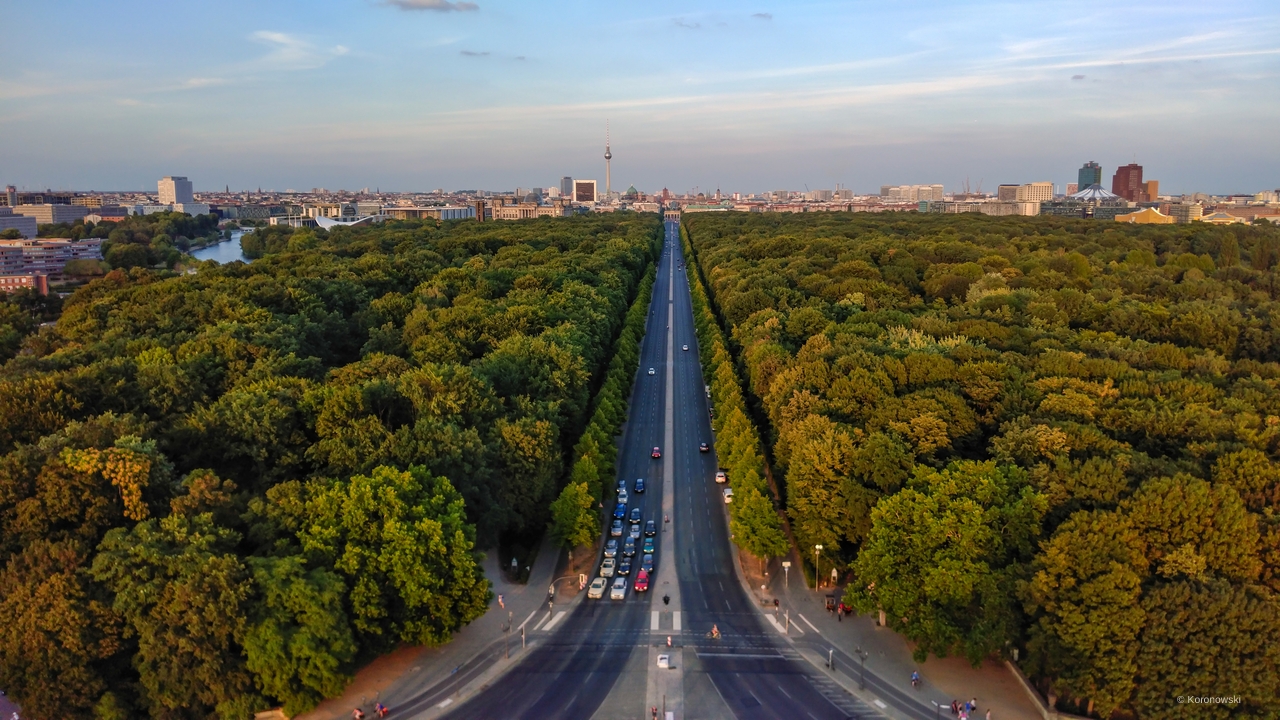The large Tiergarten is the second largest green oasis in Berlin and the third largest inner-city park in Germany.
For a long time, the Berliners called the 40,000 square metre park "Garten Eden". With an area of 210 hectares, it is like an island. The Tiergarten is for everyone a "garden" with many possibilities. There you can go for a walk, ride a bicycle, skate, jog, play football, grill and much more. Everywhere in the park are small cafes and waterholes, the English Garden, arranged around a pond, is one of the most beautiful destinations in the zoo.
The big Tiergarten
Location & Sights nearby
Due to its sheer size and the central location, one has all kinds of possibilities to explore the city, but also the park itself during a visit to the zoo. In the east, the Tiergarten borders on the government quarter with the Reichstag and the Brandenburg Gate. In the southeast you will find Potsdamer Platz and in the southwest the Zoological Garden.
The "Teehaus", which is located in the park, was built on the foundation of the former residence of Gustaf Gründgens.
The Neuen See, the Luiseninsel and the Gedenkstätte Deutscher Widerstand can be found in the southern part of the Tiergarten. A stele for Karl Liebknecht and a monument for Rosa Luxemburg commemorate the founders of the KPD and their brutal murder.
Weather
Brief history of the big Tiergarten
The first Tiergarten was built as early as 1527, but at a different location, namely near the Berlin City Palace. From 1530 it was extended to the west and north, to the borders of today's Tiergarten. Wild animals were abandoned, fences were erected and the Elector of Brandenburg could indulge in his passion for hunting.
Frederick I created structures that are still visible today. A wide aisle was built as a link between the city palace and Charlottenburg Palace, built between 1695 and 1699.
Frederick the Great had nothing left for hunting and had a park created for the population from the hunting grounds. He had the fences torn down, planted flower beds, borders and trellises, erected labyrinths, water basins and ornamental ponds and erected sculptures. So-called salons were built, squares framed by trees and hedges, and even seats were provided. Oases that invited the visitor to linger.
Many landscape designers have demonstrated their skills over the years, and Peter Joseph Lenné created an English folk park from today's Tiergarten from 1833 to 1838.
Unfortunately, the park suffered a lot from the fights during the Second World War. It was catastrophic. There was almost no tree left as it was used as firewood by Berliners even after the war. 1949 began the reforestation, which consisted almost only of tree donations from other German cities. Today it is a popular excursion destination where you can escape the hustle and bustle of the big city, such as in the English Garden.
The English Garden in the Tiergarten was designed by landscape architect Wilhelm Alverdes. With over 5000 tree donations from the private gardens of King George VI and British citizens, the garden was redesigned southwest of Bellevue Castle. The gardens were inaugurated on 25 May 1952 in the presence of Foreign Minister Anthony Eden.
Address, opening hours ...
Address: 10557 Berlin, Straße des 17. Juni
Opening times: always open
Connection: S station Tiergarten (S5, S7, S75), Bus: S station Tiergarten (N9)
Sights, tours and tickets ... on Tripadvisor.
Brandenburg Gate, Reichstag Building, Pergamon Museum and many other landmarks & sights make a visit to Berlin unique.
Trip AdvisorOur Berlin tip:
Visit the Reichstag and enjoy a beautiful view of Berlin from the famed glass dome. Enjoy the Dachgarten Käfer restaurant in the Reichstag coffee + cake.
More information can be found here.





